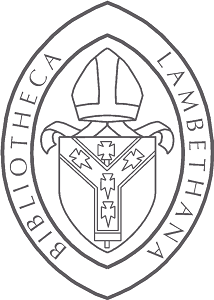Everyone has probably seen book pages discoloured by time, pollution and exposure to light. The pages turn yellow and brittle, especially at the edges. If they are ‘dog eared’ with corners folded over, these will often break away. This is often accompanied by that delicious old book smell, which is unfortunately a sign of deterioration products in the paper.


However, this discolouration, which is often more brown than yellow, is very different to the colour found in ‘Preparation to the Crosse’, a collection of three volumes printed in 1540, 1544, and 1545. The pages of this book are dyed a bright yellow. It is unclear what was used to dye the pages but orpiment and lead tin yellow were in use at the time of printing. Both orpiment and lead tin yellow are light sensitive, but this doesn’t seem to have affected the vibrancy of the colour as the pages are protected by being bound into a book. Whichever pigment was used, it is water sensitive as can be seen in areas of water staining where the colour has readily moved. The original colour of the paper underneath can bee seen in these areas.

It is likely that the pages were coloured by the first owner, rather than the printer. The owner may have purchased the pages in sheets, had them coloured and then bound together. Looking down into the fold of the section the yellow colour can be seen to fully colour each folio, see image below. This points to the colouring happening before it was sewn or bound. The sewing appears to be original and of a natural fibre, probably linen, and stands out starkly against the bright yellow. The sewing stations match the raised bands on the spine and the book does not appear to have been resewn despite being rebound. The current binding, a nondescript pale sheep, was likely done in the early 19th century. It was not uncommon for rebindings to retain the original sewing at this time. When the original sewing supports broke and the boards became loose a new binding was simply created to replace the old.

In addition to what was used to colour the pages, it is also unclear why the pages were dyed. There are references at the time to yellow being the colour of Judas and therefore an unfavourable. Conversely, there are references to yellow being a colour of valour and bravery. Unfortunately, neither of these meanings sheds light on why this book was coloured yellow. However, colour has long been used to organize libraries. For example, the fore-edge may have been coloured a variety of shades to distinguish subject headings while books were still shelved fore-edge out. Our books edges are coloured red, likely trimmed and coloured at the time of the 19th century rebinding. Later books shelved in the modern spine-out fashion used a similar system by utilizing various colours of leather. Unfortunately, this doesn’t explain the very yellow pages on the inside of the book either. If you have any other thoughts or can shed light on this mystery, we would love to hear about them in the comments!

